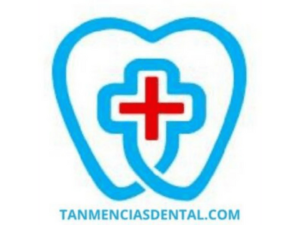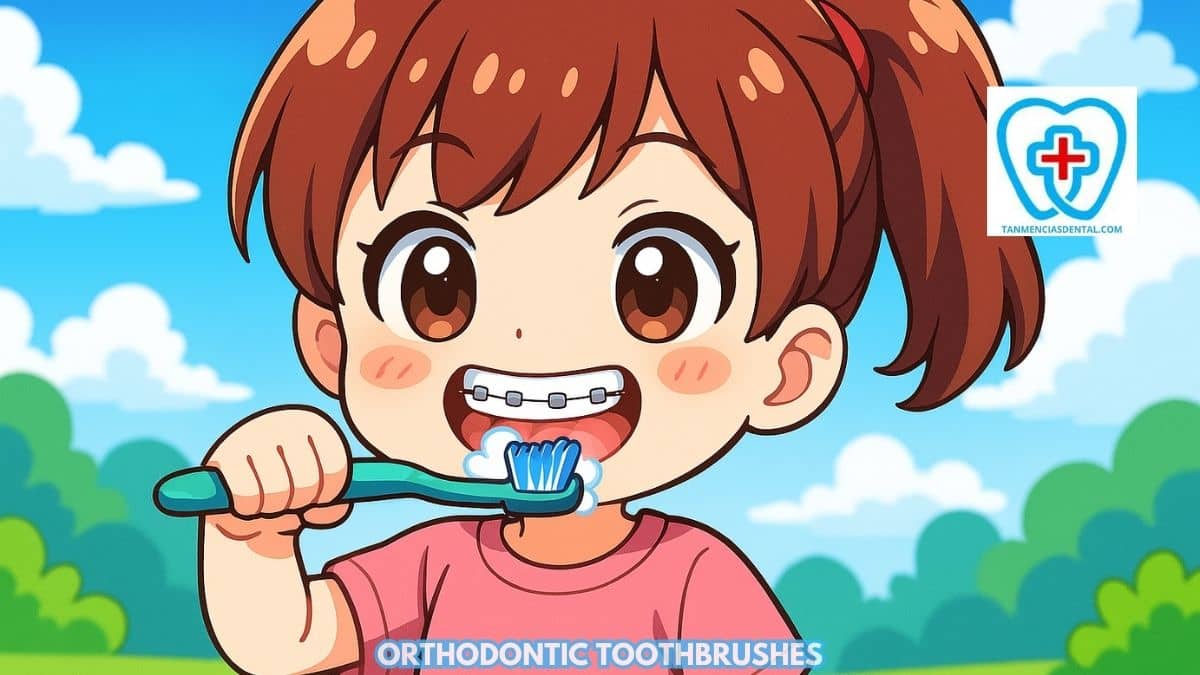Orthodontic toothbrushes are designed to handle the cleaning challenges that come with wearing braces.
Traditional brushes often leave food and plaque behind because they cannot fit around brackets and wires.
This can lead to gum problems, tooth decay, or spots on the enamel if ignored.
A toothbrush made for orthodontic care reduces these risks and makes cleaning easier.
For patients, this means healthier teeth during treatment and a better smile when the braces are removed.
1. V-Shaped Bristles For Braces
One of the main features of orthodontic toothbrushes is the V-shaped bristle design.
The bristles are cut in a way that fits around brackets and wires without causing damage.
This helps clean the surface of the teeth while also brushing under and around the braces.
Regular brushes with flat bristles often miss these areas, leaving harmful buildup behind.
With a V-shaped brush, both the teeth and braces stay cleaner with less effort.
🦷 Top Foods That Help Manage Gingivitis Naturally
2. Effective Plaque Removal Around Brackets
Plaque often gathers around the edges of brackets because these areas are difficult to clean.
Orthodontic toothbrushes are designed to target these spots more effectively than regular brushes.
Their bristles reach close to the brackets and wires, loosening plaque before it turns into tartar.
Good plaque control is a key part of maintaining proper oral hygiene during orthodontic treatment.
For even better results, patients can combine brushing with interdental cleaners that reach between teeth and wires.
Using dental floss or flossing tools is also helpful for removing buildup that a toothbrush alone may miss.
These extra steps lower the chance of cavities and gum problems while braces are on.
With careful daily cleaning, teeth stay healthier and treatment stays on track.
🦷 Should You Rinse Your Mouth After Brushing?
3. Gum Inflammation Prevention
When plaque builds up along the gumline, it can cause swelling and bleeding.
Orthodontic toothbrushes are shaped to gently clean the gums without causing discomfort.
Regular use keeps gums firm and less likely to develop inflammation.
Healthy gums are important for supporting the teeth and braces throughout treatment.
Without proper gum care, treatment progress can be slowed by added dental problems.
🦷 Is Brushing After Every Meal Harmful or Helpful?
4. Enamel Protection And White Spot Prevention
Enamel is the hard outer layer of the tooth, but it can weaken if not cleaned well.
Plaque that stays on enamel for too long may cause chalky white spots that remain even after braces are removed.
Orthodontic toothbrushes help prevent these spots by reaching around the brackets and wires.
They also reduce the risk of cavities that damage the enamel.
Protecting enamel ensures teeth stay strong and look better once treatment ends.
🦷 How Alcohol Use Affects Gingivitis and Gum Health
5. Removes Food Debris And Bad Breath
Food often gets stuck between wires, brackets, and teeth during meals.
If not removed, this debris can cause unpleasant odors and increase bacterial growth.
Orthodontic toothbrushes are made to reach into these areas and clear away trapped food.
By keeping the mouth clean, they also reduce the risk of tooth decay linked to leftover particles.
Regular brushing with the right toothbrush leaves the mouth fresher and healthier.
🦷 Is It Possible to Reverse Periodontal Disease?
6. Efficient Cleaning In Tight Areas
Braces create many small spaces that regular brushes cannot fully clean.
Orthodontic toothbrushes have angled or shaped bristles that can reach into these tight areas.
This helps remove plaque that hides between teeth and wires.
Cleaning these areas prevents bacteria from spreading to the rest of the mouth.
The result is a more complete cleaning routine that lowers the chance of oral problems.
🦷 Basic Dental Care vs. Routine Dental Care: Understanding the Difference
7. Compact Head For Back Teeth Access
Back teeth are often difficult to reach, especially when ortho brackets and wires are in the way.
An orthodontic toothbrush with a compact brush head is designed to fit into these tight spaces more comfortably.
The smaller size allows better movement around the molars without pressing against the braces.
This feature makes it easier to remove plaque and trapped food from areas that are commonly missed.
Unlike a regular manual toothbrush with a larger head, the compact version can clean more precisely around the back teeth.
This helps prevent gum problems and cavities from forming in hard-to-reach spots.
Keeping the molars clean also supports overall oral health during treatment.
With a compact brush head, patients can feel more confident that every part of the mouth is being cared for.
🦷 Are Electric Toothbrushes Safe and Effective for Kids?
8. Easier Cleaning Around Bonded Brackets
Bonded brackets are fixed directly to the teeth and collect plaque if not brushed carefully.
Orthodontic toothbrushes are shaped to clean around these brackets without loosening them.
Their bristles reach both the edges of the bracket and the surface of the tooth.
This reduces the chance of decay forming under or around the bond.
Cleaner brackets also mean fewer emergency visits for repairs.
🦷 Treating Gingivitis in Toddlers: A Helpful Guide for Parents
9. Supports Oral Health And Treatment Success
Maintaining oral health during braces is vital for the success of treatment.
Orthodontic toothbrushes give patients the tools to keep their teeth in good condition.
When gums and teeth remain strong, the braces can do their job without complications.
Clean teeth also make it easier for orthodontists to monitor progress.
Good daily care ensures the final result is healthier and more attractive.
🦷 Essential Dental Care Services in Marikina
10. Available In Manual And Electric Versions
Orthodontic toothbrushes come in both manual and electric models.
Manual brushes are simple and affordable, making them easy for most patients to use.
Electric brushes may provide deeper cleaning with their vibrating or rotating heads.
Some people find electric versions more effective at reaching hard-to-clean spots.
Both options are designed to work with braces and improve oral care during treatment.
🦷 Affordable Family Dental Care in Marikina
👨⚕️ Conclusion
Orthodontic toothbrushes are essential tools for anyone wearing braces.
They clean areas that normal brushes often miss, protecting both teeth and gums.
These brushes also help prevent problems like white spots, bad breath, and enamel damage.
With better cleaning, patients enjoy healthier teeth throughout treatment.
Using orthodontic toothbrushes daily makes the whole process safer and more effective.
😊 Self-Promotion
At Tan-Mencias Dental Clinic, we are here to give you the best care for your smile.
You can visit us at 44 G. Del Pilar Street, Parang, Marikina City, for a friendly and comfortable dental experience.
If you have any questions, you can call us at 0917-145-1074.
You may also send us a message through our Facebook page or our website’s contact form.
We look forward to helping you keep your teeth healthy and bright!
❔ FAQs
1. How often should I use an orthodontic toothbrush when I have braces?
You should brush your teeth at least twice a day, but many dentists recommend brushing after every meal if you wear braces.
This helps remove food that gets trapped in the brackets and wires.
Using an orthodontic toothbrush makes this process easier and more effective.
Regular brushing prevents plaque buildup and keeps your treatment on track.
2. Can I still use a regular toothbrush with braces?
A regular toothbrush can clean your teeth, but it may not reach around brackets and wires very well.
Orthodontic toothbrushes are designed with special bristles to clean these areas more thoroughly.
If you only use a normal brush, you may miss spots that can lead to cavities or gum problems.
For best results, it is better to use a toothbrush made for braces.
3. Are electric orthodontic toothbrushes better than manual ones?
Both manual and electric orthodontic toothbrushes can clean teeth effectively.
Electric versions often provide extra cleaning power and may be easier for some people to use.
Manual brushes are simpler and usually cost less, but they still work well if used properly.
The best choice depends on your comfort and your dentist’s advice.
4. What happens if I do not use an orthodontic toothbrush while wearing braces?
Without the right toothbrush, food and plaque may build up around your brackets and wires.
This can lead to gum inflammation, cavities, or white spots on the teeth.
Poor cleaning may also slow down your orthodontic progress.
Using an orthodontic toothbrush helps avoid these problems and keeps your treatment smoother.
5. How do I take care of my orthodontic toothbrush?
Rinse your orthodontic toothbrush well after every use to remove toothpaste and debris.
Store it upright in a clean, dry place to let it air dry.
Replace the toothbrush every three months or sooner if the bristles are worn out.
A fresh toothbrush keeps your cleaning effective and more comfortable.

